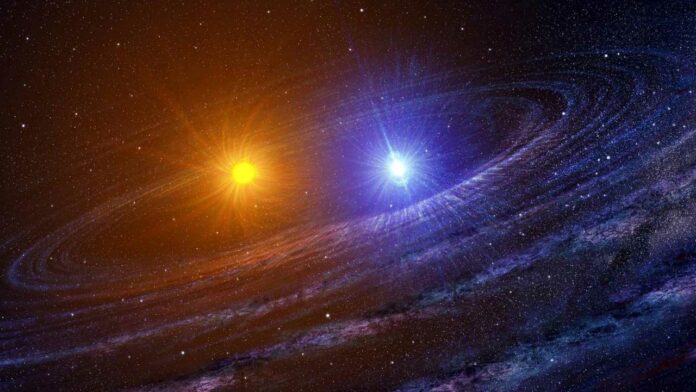Blue supergiants are the brightest stars in their host galaxies, and yet their evolutionary status has been a longstanding problem in stellar astrophysics. Due to their immense luminosities, BSGs serve as excellent spectroscopic calibrators of extragalactic distances and interstellar extinction, the galactic stellar mass–metallicity relation, and tracers of galactic chemical evolution.
Most blue supergiants are known to be single, meaning they don’t have any discernible gravitationally bound companions, which provides a crucial hint about their origin. Nonetheless, most newborn massive stars are known to form in binary systems with companion stars. Blue supergiants: why are they single? The answer: massive binary star systems ‘merge’ and produce blue supergiants.
An international piece of research led by the Instituto de Astrofísica de Canarias (IAC) has found clues to the nature of blue supergiants. The majority of blue supergiants may have arisen via the merger of two stars bound in a binary system, according to strong evidence revealed by IAC researchers after running innovative stellar models and analyzing a sizable data sample in the Large Magellanic Cloud.
The group examined a sample of fifty-nine early B-type blue supergiants in the Large Magellanic Cloud, a Milky Way satellite galaxy, and generated intricate models of star mergers.
IAC researcher Athira Menon said, “We simulated the mergers of evolved giant stars with their smaller stellar companions over a wide range of parameters, taking into account the interaction and mixing of the two stars during the merger. The newly-born stars live as blue supergiants throughout the second-longest phase of a star’s life, when it burns helium in its core.”
Artemio Herrero, IAC researcher and co-author of the article, “The results obtained explain why blue supergiants are found in the so-called ‘evolutionary gap’ from classical stellar physics, a phase of their evolution where we would not expect to find stars.”
Danny Lennon, an IAC researcher who also participated in the study, said, “Remarkably, we found that stars born from such mergers have greater success in reproducing the surface composition, particularly the nitrogen and helium enhancement, of a large fraction of the sample than conventional stellar models. This indicates that mergers may be the dominant channel to produce blue supergiants.”
This work highlights the critical role that star mergers play in the morphology of galaxies and their stellar populations, and it takes a significant step towards addressing a longstanding mystery about the formation of blue supergiants. The following phase of the research will investigate how these blue supergiants’ explosions affect the black hole-neutron star landscape.
Journal Reference:
- Athira Menon et al. “Evidence for Evolved Stellar Binary Mergers in Observed B-type Blue Supergiants” 2024 ApJL 963 L42. DOI: 10.3847/2041-8213/ad2074
